Crisis Management Spotlight: US Airways’ Hudson River Landing
Leadership in a Crisis
A hearty salute to Captain Chesley B. Sullenberger, III, the US Airways pilot whose cool and decisive handling of a breaking crisis prevented a plane crash from becoming a tragedy.
Captain Sullenberger, a former US Air Force fighter pilot, a pilot union safety official, and a sometime plane crash investigator with the National Transportation Safety Board (NTSB), exhibited exceptional leadership skills when his Airbus 320 aircraft hit a flock of geese when taking off from LaGuardia airport yesterday afternoon.
The geese took out both of his plane’s engines at approximately 3,200 feet as the plane was making a left turn over the Bronx. With no power in his engines, Captain Sullenberger had a choice to make, and very little time to make it.
- He could try to get back to LaGuardia, flying in a loop back to one of its runways. Downside: if he missed the runway, he’d crash into a highly populated urban setting, in a plane filled with fuel. The possibility of massive fatalities onboard and on the ground was high.
- He could cross the Hudson River and try to land at Teterboro, a general aviation airport just across the George Washington Bridge in New Jersey, which he told air traffic controllers he could see. Downside: If he missed the runway, he’d come down in a heavily populated residential area.
- Or he could attempt a controlled water landing in the Hudson River.
He chose the latter. Using his plane as a glider, he passed the George Washington Bridge at about 900 feet. He brought the plane down in a classic landing position, with the nose just above the tail, allowing the plane, in the words of one witness, to skim across the water like a flat pebble.
The 81-ton plane settled into the river, intact and afloat. The Hudson at the time was filled with ferries, small boats, and the usual Coast Guard, New York Police Department, and New York Fire Department watercraft. Within minutes the plane was surrounded by rescuers on boats, in helicopters, and in the case of NYPD rescue divers, in the water.
The 5-person flight crew kept the passengers calm and led an orderly evacuation. All 150 passengers, including a 9-month old baby, got out. One had two broken legs; others had impact injuries. And some had to be treated for hypothermia. The air temperature was about 30; the water temperature close to freezing. But all the passengers, and all five crew, survived. New York State Governor David Paterson called the event “A miracle on the Hudson.”
According to reports from the passengers and New York City Mayor Michael Bloomberg, Captain Sullenberger then walked through the plane twice to assure that there was no-one left. One witness said that the back of the plane was filled with water to neck-height. Captain Sullenberger was the last to climb into a raft. The last passenger to leave the plane told the news media that in the raft he gave the Captain a hug and called him “our hero.”
Leadership Lessons
One of the fundamental principles of crisis management is that bad things happen to good organizations all the time. It isn’t the severity of the negative event that determines whether the organization suffers reputational, operational, or financial harm, but rather the nature and timeliness of the response. (For more on this, see our article “Effective Leadership Response in a Crisis” in the peer-reviewed management journal Strategy & Leadership.)
That piece notes the leadership lessons that former General Electric CEO Jack Welch offered in the wake of 9/11. He said that effective leaders exhibit a particular set of attributes in a crisis: “forthright, calm, fierce boldness.” (“The five stages of crisis-management” by Jack Welch, The Wall Street Journal, September 14,
2005, p. A20. No longer available online free of charge.)
In particular, leaders need to make quick choices where all the outcomes are bad. But they need to choose the least bad outcome. Captain Sullenberger did this in recognizing that a water landing, even in freezing temperatures, was a better (or less bad) option than the risk of fire, explosion, and loss of further life on the ground. While calm, he quickly — almost instinctively — made the tough call. And it turned out to be the right call. It was also a bold call.
He also was able to execute the decision effectively, gliding his plane to a landing that didn’t result in the aircraft coming apart, or sinking, or flipping over.
So both strategy and execution need to be attended to. 155 families can be grateful that Captain Sullenberger got both right.
Forthright, calm, fierce boldness is a package that isn’t often exhibited in a crisis. It’s hard to be both calm and fierce. To be forthright and bold. But as Captain Sullenberger demonstrated, this combination is precisely what’s needed to turn a potential tragedy into a positive — or at least a less negative — outcome.
Personal Reflection on Plane Travel
A final, personal, note. I flew on 146 airplanes last year. About a third of the flights took off from LaGuardia. I had landed at LaGuardia 14 hours before flight 1549 took off, and my wife had taken off from the very same runway six hours before flight 1549.
Every time I leave a plane I make eye contact with the pilot and offer a quiet “Thank you.” I’ll start doing it a bit more vocally now. I encourage you to do the same.
Fred


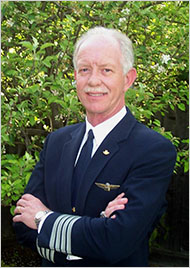
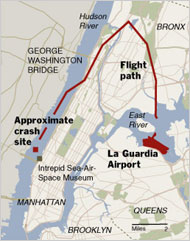
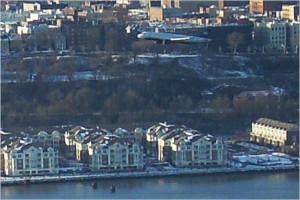
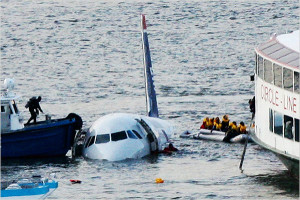
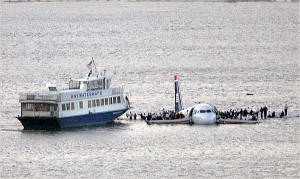
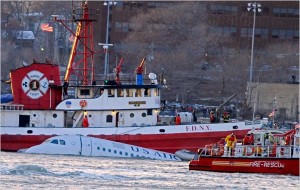

Leave a Reply
Want to join the discussion?Feel free to contribute!